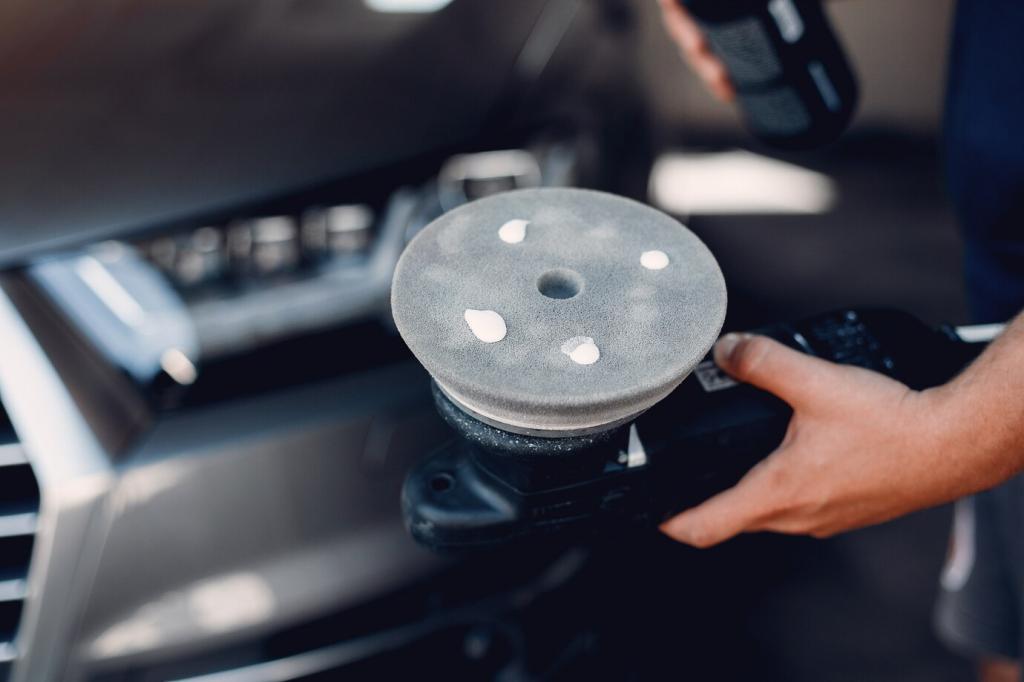Smart Coatings for Vehicle Protection: Futureproof Your Drive
What Makes a Coating “Smart”?
01
Engineered at the Nanoscale
Smart coatings tune surface energy and microtexture using silica, ceramic, or graphene-based particles to create durable barriers. This architecture encourages water to roll off, dirt to detach, and road film to release, dramatically easing maintenance between washes.
02
Self-Healing Chemistry
Microcapsules filled with clearcoat-compatible resins rupture when scratched, flowing into microabrasions before curing. The process reduces visible swirls and preserves gloss, especially on soft modern clear coats that typically show marks from daily washing routines.
03
Multi-Function Layer Stacks
Layered systems combine hydrophobic topcoats, UV absorbers, and anti-corrosion primers. Together they deliver complementary protection, ensuring fewer reapplications, better shine retention, and measurable performance in gloss, contact angle, and salt spray tests across seasonal conditions.
Self-Healing in Daily Driving
Swirl Reduction on Clearcoats
On dark finishes, micro-marring from towels and automatic washes is relentless. Self-healing polymers soften slightly with mild heat, allowing shallow defects to level out. Many drivers notice improved clarity after a warm day or gentle infrared curing cycles.
Microcrack Bridging Over Time
Elastomeric networks distribute stress across tiny cracks that can propagate in harsh climates. By slowing crack growth in the coating, the finish keeps contaminants out of the paint layer, which helps maintain color depth and reflective crispness through seasons.
Anecdote: City Bumper Stories
A reader reported faint scuffs from a tight parallel park that largely faded after a sunny afternoon. While not a miracle for deep gouges, the self-healing effect buffered minor damage, saving a trip to the detailer. Share your scratch survival story below.
Hydrophobic and Oleophobic Shielding
Hydrophobic surfaces mimic lotus leaves, using microscopic roughness to minimize contact area. Water beads into tight spheres and rolls away, pulling dust along. This effect limits mineral spotting, reduces wash time, and keeps headlights and glass clearer between storms.

Corrosion and Underbody Protection
Anti-corrosion primers combine dense barriers with active inhibitors that neutralize corrosive species. Some systems employ organosilanes for adhesion and moisture resistance, keeping metal interfaces drier and less reactive under cyclical wetting in real-world driving conditions.
Corrosion and Underbody Protection
ASTM salt spray and cyclic corrosion tests help predict durability. While lab tests are controlled, field data from coastal fleets shows meaningful rust delay with proper prep and film build. Ask your installer about verified specs for your climate and use case.
Corrosion and Underbody Protection
A contractor’s pickup working near docks previously showed frame rust within two winters. After a thorough decontamination, primer upgrade, and smart underbody coating, only light surface bloom appeared by spring. Share your regional corrosion challenges for targeted, climate-specific tips.
UV Defense and Thermal Awareness
Modern systems pair UV absorbers with hindered amine light stabilizers, reducing photo-oxidation that yellows or chalks paint. This protects depth and clarity, especially on vibrant reds and blues notorious for fading under intense summer exposure and high-altitude sunlight.
Application, Curing, and Care
Surface Preparation Ritual
Start with thorough wash, iron removal, clay, and panel wipe to strip oils. Level microdefects with a finishing polish if needed. Properly cleaned, high-tension surfaces bond coatings better, reducing high spots and securing even gloss across complex body curves.
Cure Conditions Matter
Respect flash times, humidity limits, and temperature windows. Gentle infrared or controlled garages accelerate crosslinking and improve durability. Rushing application can imprint smears or haze. Share your best cure setup and we’ll feature standout tips in our next newsletter.
Maintenance Metrics
Track gloss with a meter and beading via contact-angle photos to spot decline early. Use neutral shampoos and avoid abrasive towels. If performance dips, refresh toppers rather than stripping. Comment with your readings so the community can benchmark real-world outcomes.
Conductive or piezo-resistive coatings can detect impacts and strain, enabling early alerts for parking taps or pothole stress. Paired with vehicle telematics, they could log incidents objectively, helping owners manage minor damage before it becomes a costly repair.

